Gastronomes of Garlic, Unite
Take a whiff!
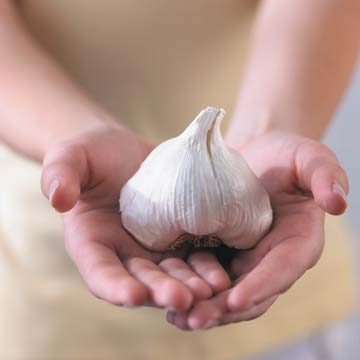
Fascinated by the ultimate in edibles, Triangle foodies have catapulted even basics, such as salt and coffee, from simple
to celebrated.
Garlic may be the next consumable headed for the limelight. A little bulb with a big history, it adds intense flavor and comes in hundreds of varieties, so bon vivants are cult-like in their devotion.
Personally, I’m reeking — uh, reeling — from all the research I’ve done on onion’s pungent cousin.
“Along with its well-earned reputation for discouraging friends and repelling vampires," notes the N.C. Department of Agriculture in Raleigh, “this powerful herb has a storied culinary and medical history.
“Egyptian pyramid builders took it for strength and endurance. Medieval healers recommended it as protection against supernatural forces. The French scientist Louis Pasteur investigated its antibacterial properties, and doctors in the two World Wars treated battle wounds with garlic juice when other drugs were unavailable.
“A member of the family that also includes onions and scallions, garlic (Allium sativum) imparts a distinctive flavor and aroma when used in cooking. Its healing powers are concentrated in the most odiferous part of the plant and the one that is also used in the kitchen — the bulb.”
“Garlic and Other Alliums: The Lore and the Science” by Eric Block, Ph.D., a chemist, was published earlier this year by the Royal Society of Chemistry.
The good doctor’s cooking suggestions:
• If using raw garlic (for example, in dressing or salsa), either chop just before serving or rinse the chopped pieces thoroughly.
• If heating garlic, cooking whole or coarsely chopped bulbs will moderate their flavor. Crushing or grating intensifies it.
• If counting on garlic to add depth to stews, braises or stocks, go with finely chopping, crushing or pureeing. Heat will eliminate the bite and develop the aroma.
Want to grow your own legend-heavy herb? In the Triangle, garlic planting season is now!
The best time to put the seeds in the ground is mid-fall; the harvest’s in May. Italian and New York White Neck varieties of softneck garlic and German Extra Hardy hardneck garlic grow best in the Tarheel state.
The acrid bulb’s rep as an all-powerful cure for everything that ails us still grows. So what about those health claims?
UNC-Chapel Hill research showed that people who regularly consume raw or cooked garlic face a lower risk of some cancers.
“There seems to be a strong, consistent protective effect for people who are regular garlic consumers,” noted Lenore Arab, Ph.D., who was a professor of epidemiology and nutrition at the UNC-CH schools of public health and medicine when she headed the research team.
Other studies have shown that a compound in garlic called allium partially protects animals against cancer, and some scientists believe it has the same effect in humans, said Arab, now a visiting professor of epidemiology at UCLA School of Public Health in California.
You may repel people from your kitchen, but if you want to light up their taste buds with a flavor explosion, check out these recipes. Just get the breath mints ready!
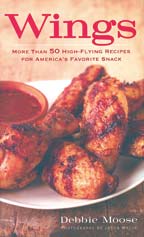 Wings
Wings
Wings With Jim’s Fire and Spice Rub
My friend Jim Crabtree in Raleigh is a master of the grill. He has been tweaking this rub for years. Wear disposable latex gloves when handling the fiery scotch bonnet and the rub containing it. Let’s keep this one on the grill, folks.
3 to 4 cloves garlic, chopped
1 fresh scotch bonnet pepper, seeds and veins removed, crushed
4 tablespoons ground allspice
2 tablespoons light brown sugar
2 tablespoons soy sauce (optional)
1 tablespoon vegetable oil
1 tablespoon dried thyme
1 tablespoon paprika
1 teaspoon onion powder
1 teaspoon salt
1 teaspoon ground cinnamon
1 teaspoon ground nutmeg
1/4 teaspoon freshly ground black pepper
12 wings, cut in half at joints, wing tips removed and discarded
In a bowl, combine the garlic, scotch bonnet pepper, allspice, brown sugar, soy sauce (if using), oil, thyme, paprika, onion powder, salt, cinnamon, nutmeg and pepper. Stir and mash to form a paste.
Rub the wings thoroughly with the paste. Cover and refrigerate overnight.
Prepare a gas or charcoal grill for direct cooking. Grill, turning frequently, for 15 to 20 minutes or until done.
Makes 24 pieces.
Garlic, Glorious Garlic
Fans of “the stinking rose,” this one is for you! To speed preparation, purchase already chopped garlic in a jar or use a food processor to chop fresh garlic cloves.
3/4 cup chopped garlic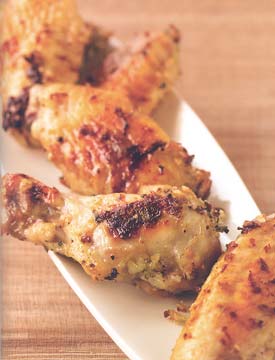
3 tablespoons finely chopped onion
1 tablespoon dried thyme, crushed
1-1/2 teaspoons olive oil
1-1/2 teaspoons white wine vinegar
1-1/2 teaspoons salt
3/4 teaspoon dried oregano
3/4 teaspoon freshly ground black pepper
12 wings, cut in half at joints, wing tips removed and discarded
In a small bowl, combine the garlic, onion, thyme, oil, vinegar, salt, oregano and black pepper. Stir and mash until the ingredients are combined and a little like a paste.
Place the wings in a resealable plastic bag. Pour in the garlic mixture and toss to coat the wings. Refrigerate for at least 2 hours or as long as overnight.
Preheat the oven to 400 degrees. Cover a rimmed baking sheet with foil and spray the foil with nonstick cooking spray. Remove the wings from the marinade and discard the marinade. Bake for 20 to 30 minutes or until done.
Makes 24 pieces.
 Everything Healthy Slow Cooker Cookbook
Everything Healthy Slow Cooker Cookbook
Black Bean Soup
Habanero peppers have a spicy, fruity flavor and are quite hot. If you prefer a milder dish, you can substitute an equal number of jalapenos. This soup is excellent served with corn bread.
3 slices turkey bacon 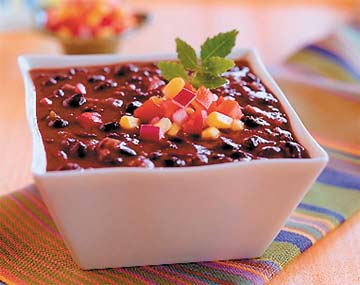
1 teaspoon canola oil
1 medium onion, diced
1 habanero pepper, seeded and minced
3 cloves garlic, minced
1 stalk celery, diced
1 carrot, diced
30 ounces canned black beans, drained and rinsed
3 cups chicken stock
Cook the turkey bacon in a nonstick skillet until crisp. Drain on paper-towel-lined plates. Crumble the bacon into small pieces.
Heat the oil in a nonstick skillet. Add the onions, habanero, garlic, celery and carrot. Saute until the onions are soft, about 2-4 minutes.
Put the beans, onion mixture and bacon crumbles into a 4-quart slow cooker. Add the broth and stir. Cook on low for 8-10 hours or on high for 4 hours.
Makes 8 servings.
Aromatic Chicken Rice Soup
This Thai-influenced soup is wonderful when you’re feeling under the weather. It is also a great way to use up leftover chicken and that last box of rice from Chinese takeout.
2 quarts chicken stock
2 carrots, diced
2 stalks celery, diced
2" knob fresh ginger, minced
1/2" knob galangal root (available at Asian and gourmet stores), minced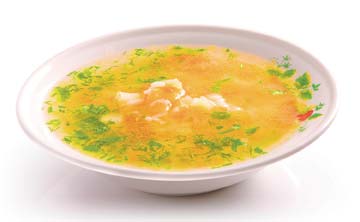
2 tablespoons lime juice
1 onion, minced
4 cloves garlic, minced
1/8 teaspoon salt
1/2 teaspoon freshly ground pepper
1/2 cup minced cilantro
1-1/2 cups cooked rice
2 cups diced cooked chicken
Place the chicken stock, carrots, celery, ginger, galangal root, lime juice, onion, garlic, salt and pepper in a 4-quart slow cooker. Stir. Cook on low for 7-9 hours.
Stir in the cilantro, rice and chicken. Cook on high for 15-30 minutes. Stir prior to serving.
Makes 8 servings.
 No More Takeout!
No More Takeout!
Jumbo Shrimp with Lemon,
Garlic and Tarragon
This is a quick and easy dish with fresh flavors. As an alternative to the pan-fried version found here, try grilling the shrimp instead, then toss them with the fresh lemon juice, minced garlic, chopped fresh tarragon and olive oil.
16 jumbo shrimp, peeled and deveined
2 tablespoons olive oil 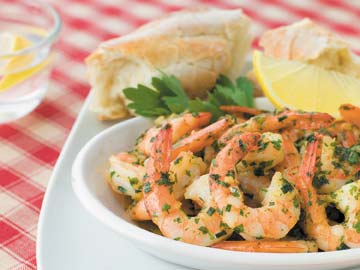
2 cloves garlic, peeled, crushed and minced
8 tablespoons (1 stick) butter, diced
Juice and grated peel of 1 lemon (about 1/4 cup juice)
2 tablespoons chopped fresh tarragon
Salt and pepper
Slide shrimp onto skewers. Place the fry pan over high heat. When hot, add the olive oil and place skewers one at a time in the pan, as space allows. Pan-fry for 3 minutes or until shrimp turns slightly pink.
Using tongs, gently turn over shrimp skewers. Add the garlic and cook for 3 more minutes or until shrimp turn white with pink edges.
Keeping shrimp in the pan, stir in the butter. When it starts to foam, add the lemon juice and grated peel. Stir in the tarragon. Using tongs, turn shrimp skewers over to coat with sauce. Remove skewers from heat. Add salt and pepper to season and serve immediately.
Makes 4 servings.
Roasted Garlic Mashed Potatoes
These buttery mashed potatoes create an elegant and silky side. To elevate humble potatoes to something creative, try serving a variety of flavor combinations in pretty bowls.
2 pounds medium Yukon Gold potatoes, peeled and halved
Salt
8 tablespoons (1 stick) butter
1/2 cup milk
1/2 cup heavy cream
White pepper
Place the stockpot filled with salted water over high heat and add the potatoes. Bring to a boil, then reduce to simmer so water is gently bubbling. Cook for about 35 minutes, until potatoes are soft. Check doneness by sliding a knife into a potato; if it slides through easily, the potatoes are done.
Remove the potatoes from heat and drain in the colander over the sink. Return the potatoes to the stockpot and mash using a potato masher.
Using the wooden spoon, fold in the butter, milk and cream. Add salt and pepper to season.
Preheat oven to 350 degrees. Place 4 peeled garlic cloves in a medium bowl and add 1 tablespoon of olive oil. Toss to coat evenly. Wrap garlic in a sheet of foil and bake in oven for 20 minutes, until golden brown. Mash garlic with a fork, then add to potatoes. Fold well.
Serve immediately.
Makes 4 servings.

 Ancient Wisdom, Modern Kitchen
Ancient Wisdom, Modern Kitchen
Garlic Green Beans
In this dish, a garlicky sauce enlivens the more subtle favor of the familiar green bean or more exotic Asian long bean (which commonly reaches 18 inches in length and can grow well past that).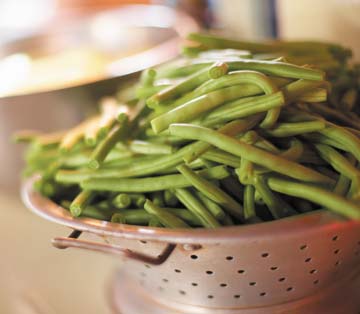
2 tablespoons rice vinegar
2 tablespoons soy sauce
2 teaspoons rice wine or dry sherry
1/4 to 1/2 teaspoon chili oil or chili sauce
2 teaspoons dark sesame oil
2 tablespoons vegetable oil, such as canola or olive oil
3 to 4 medium-size garlic cloves, peeled and minced (about 4 teaspoons)
3/4 pound green beans or long beans, washed, ends trimmed, and cut into 1- to 2-inch pieces
2 teaspoons powdered kudzu, arrowroot, cornstarch or other thickener
1 tablespoon water
Stir together the rice vinegar, soy sauce, rice wine, chili oil and sesame oil in a small bowl (step 1).
Heat the vegetable oil in a skillet or wok over medium heat, then add the garlic. Cook until fragrant (about 30 seconds).
Add the green beans and stir-fry for about 5 minutes, or until cooked.
Add to the pan the mixture of seasonings from step 1. Cook over low heat for about a minute to reduce the liquid.
In a separate small bowl, dissolve the kudzu in a tablespoon of cold water, stirring to get rid of the lumps.
Add the kudzu to the pan and stir. Serve!
Makes 2 to 3 servings.
Open Sesame Eggplant
If you’ve ever been perplexed about how to serve eggplant, here’s a great answer featuring garlic and sesame seeds.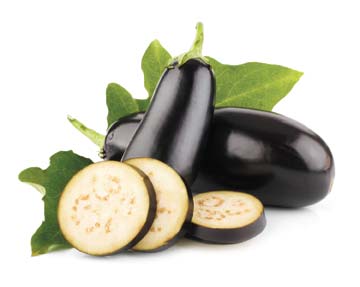
3 to 4 tablespoons dark
sesame oil
3 cloves garlic, minced
1 medium-size eggplant (about 1 pound), cut into 1-inch cubes
1 cup water
1 tablespoon rice wine
1-1/2 tablespoons soy sauce
1 tablespoon sesame seeds
Heat the oil in a pan, then add the garlic, then the eggplant. Cook until the eggplant is golden brown on all sides. (You might want to brown the eggplant in two batches to distribute the oil more evenly, as the eggplant has a tendency to absorb it.)
Add the water to the pan. Bring to a boil. Then lower the heat. Cover and cook for about 10 minutes, until soft.
Remove the lid, then add the rice wine and soy sauce. Cook, uncovered, for another 3 to 5 minutes.
In the meantime, toast the sesame seeds in a dry skillet over medium heat until golden brown, stirring or shaking frequently, about 5 minutes. When they are done, remove the seeds from the hot skillet so they don’t overcook.
Transfer the eggplant mixture to a serving dish and sprinkle with the toasted sesame seeds. Serve warm.
Makes 2 or 3 servings.
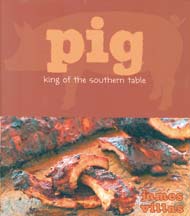 Pig — King of the Southern Table
Pig — King of the Southern Table
Bill Neal’s Braised Pork Chops With Limas and Whole Garlic
Before his untimely death, Bill Neal was producing some of the South’s most innovative dishes at Crook’s Corner restaurant in Chapel Hill, and none was more distinctive than these pork chops braised with handfuls of whole garlic cloves that almost melted as they cooked. Notice that only the outer papery skins of the garlic should be removed, thus retaining the vegetable’s natural sweetness by not peeling the cloves and releasing their pungent juices. (The same cooking principle applies to roasted whole garlic cloves, which, when the thin inner skins are left unpeeled, resemble soft, golden, sweet almonds.) Bill served these chops with mounds of buttery corn mush (or polenta, if that term is more comfortable), and I can think of no more appropriate and delicious accompaniment.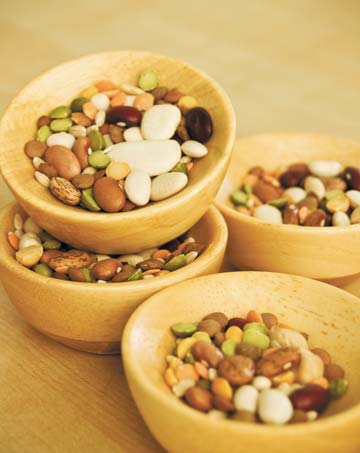
3 tablespoons olive oil
4 pork loin chops, about 1-inch thick
1 large onion, chopped
1/2 cup dry vermouth
1-1/2 cups chicken broth
24 whole garlic cloves, papery skins removed but not peeled
4 sprigs fresh thyme
4 sprigs fresh rosemary
Salt and freshly ground black pepper to taste
One 10-ounce package thawed frozen lima beans
2 tablespoons all-purpose flour dissolved in 2 tablespoons cold water
Preheat the oven to 325 degrees.
In a large, heavy skillet, heat 2 tablespoons of the olive oil over moderate heat, add the pork chops, brown on both sides and arrange in a 2-quart casserole or large baking pan. Add the remaining oil to the skillet, add the onion and stir till softened, about 5 minutes. Add the vermouth and let cook till reduced by half.
Add the broth, garlic cloves, thyme, rosemary, salt and pepper, and bring to a boil, stirring. Pour the sauce over the chops, cover and bake for 1 hour.
Add the lima beans to the casserole, stir to distribute evenly and bake till the limas are tender, about 20 minutes longer.
To thicken the sauce slightly, place the casserole over low heat, add the flour paste and stir for 5 to 10 minutes.
Serve the chops hot surrounded by limas.
Makes 4 servings.
Carolina Pork and Sweet Potato Pie
Today, North Carolina is the South’s leading producer of both pork and sweet potatoes, so it’s hardly surprising that home cooks all over the state pride themselves on elaborate stews, casseroles and pies, such as this one, that utilize these two important staples. Most likely, this biscuit-batter crust can be traced back to the “loose” suet and short pastry crusts that topped the dramatic “raised” savory meat and fish pies of the first English settlers — basically the same batter crust that, when sweetened, was also used to make the South’s distinctive fruit cobblers. Just make sure that the batter is not too stiff when mixed; if so, add enough extra milk to produce a very soft batter that can be easily spooned over the filling.
For the filling:
3 slices bacon
1 large onion, chopped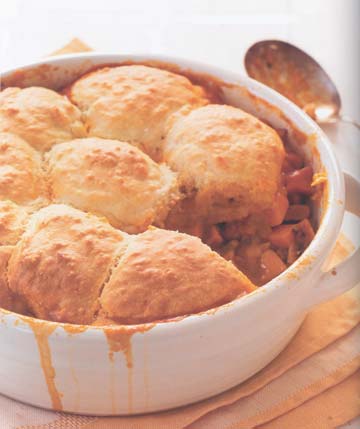
1 celery rib, chopped
1 medium green bell pepper, seeded and chopped
1 garlic clove, minced
2 pounds lean cooked pork, cut into small cubes
2 sweet potatoes, peeled and cut into small cubes
2 cups beef broth
2 tablespoons yellow cornmeal
2 tablespoons tomato paste
2 tablespoons Worcestershire sauce
Tabasco sauce to taste
1 teaspoon salt
Freshly ground black pepper to taste
For the crust:
2 cups all-purpose flour
2 teaspoons baking powder
2 teaspoons salt
3 tablespoons vegetable shortening
3/4 cup milk
1 large egg, beaten
Preheat the oven to 350 degrees. Grease a 2-quart baking dish or casserole and set aside.
To make the filling, fry the bacon in a large skillet over moderate heat till almost crisp; drain on paper towels. Add the onion, celery, bell pepper, and garlic to the skillet, and stir for about 3 minutes. Crumble the cooked bacon over the vegetables, and then add the remaining filling ingredients, stirring. Reduce the heat to low, simmer, stirring from time to time, for about 30 minutes, and then transfer to the prepared baking dish.
To make the crust, combine the flour, baking powder, salt and shortening in a bowl and work the mixture with your fingers till mealy. Add the milk and egg, and stir till well blended and smooth.
Spoon the batter over the top of the pork mixture, and bake till golden, about 40 minutes.
Serve hot.
Makes 6 servings.